How a mega-telescope will show us the evolution of the Universe
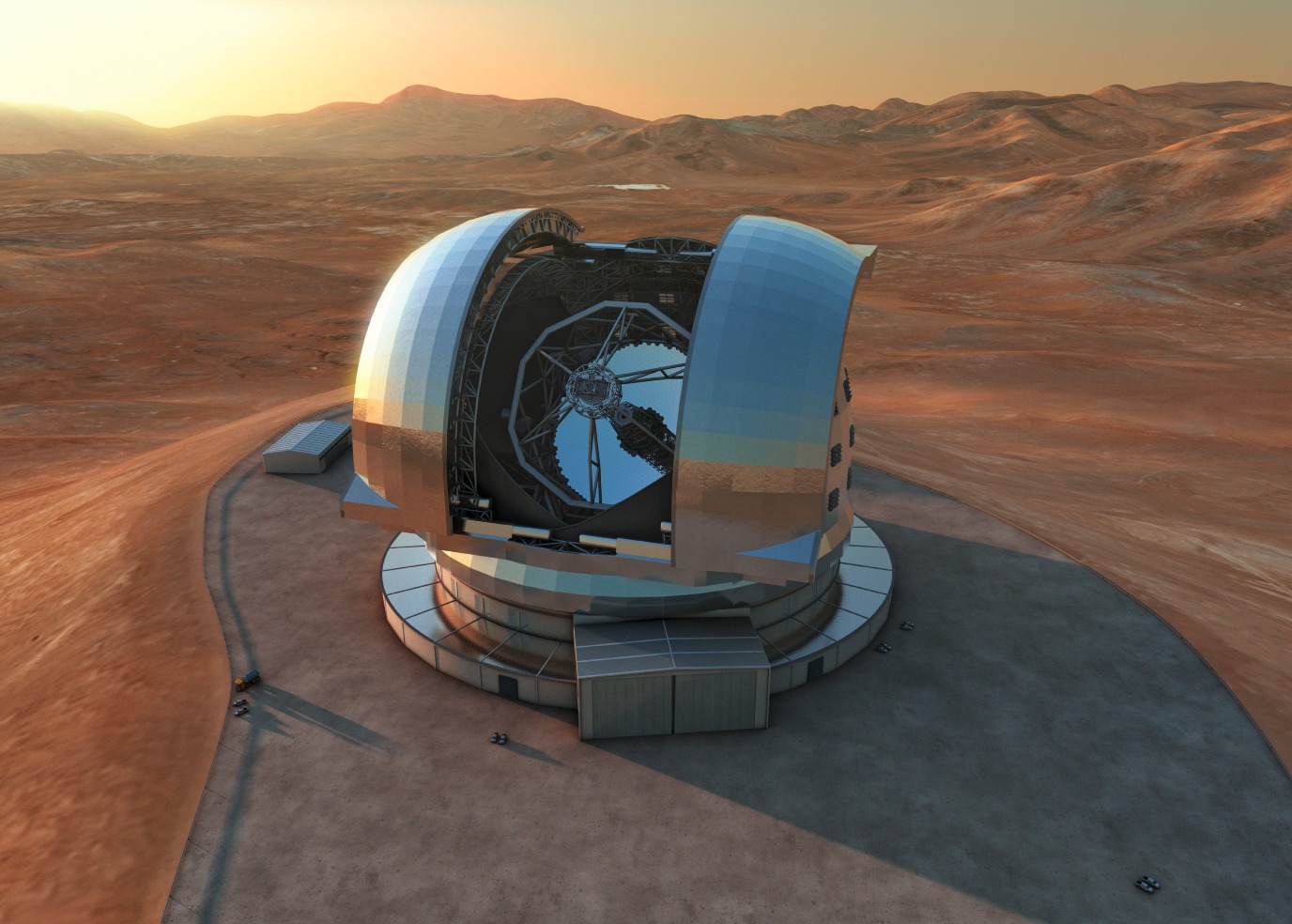
It will have the size of a professional football stadium: the European Extremely Large Telescope, which is now being built in Chili. With a primary mirror of almost 40 meters in diameter, this telescope will make it possible to study very faint objects which are far away from us. Astronomers at the University of Groningen are involved in its design and deployment, while huge parts for this mega-telescope are being built at a special facility in Dwingeloo.
FSE Science Newsroom René Fransen
At the back of a rather unassuming box-like building on the industrial area of the village of Dwingeloo, you can enter a high-tech world. It is called the NOVA MAX facility, and the Dutch Research Council has funded it with EUR 18 million for the next ten years. Its purpose is to produce the extra-large parts for ELT instruments. NOVA is the Netherlands Research School for Astronomy, an alliance of the astronomical institutes of the universities of Amsterdam, Groningen, Leiden, and Nijmegen. And MAX stands for “Manufacturing and Assembly of eXtreme instrumentation”.
(Text continues below the image)
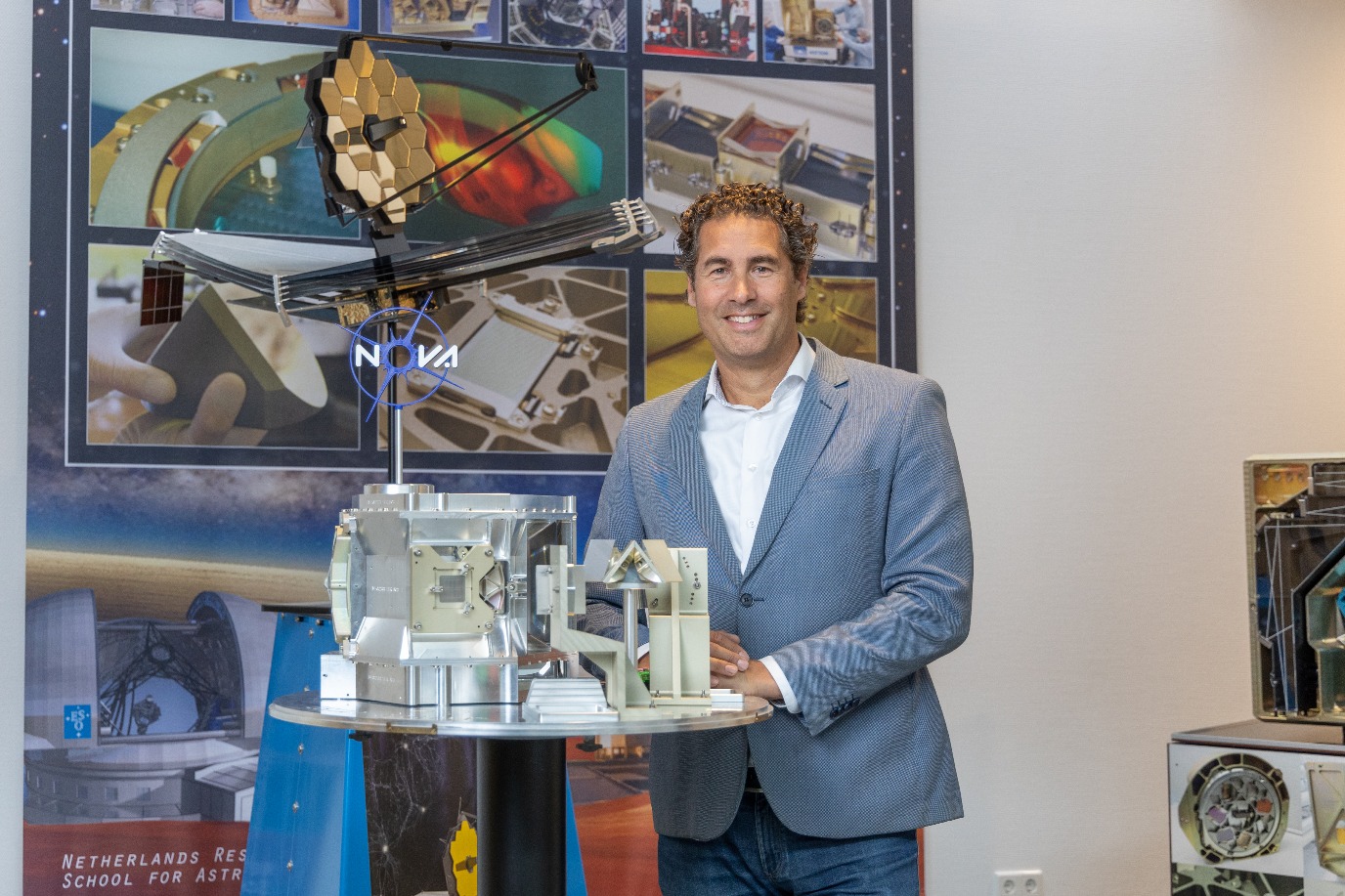
Motor blocks
The project leader for this facility is Ramon Navarro, Head of Optical Infrared R&D for NOVA. He explains that the development of the ELT parts is done by the NOVA optical infrared instrumentation group, located at the Netherlands Institute for Radioastronomy ASTRON, which has its facility just outside Dwingeloo, next to the Dwingeloo radio telescope. ‘However, at that location we didn’t have enough space for the milling machine that was to be used, that’s why we are now at the industrial area.’
Every connection creates a small deviation
The high-end computer controlled milling machine is the size of a large van, and is mostly used by the automotive industry to produce motor blocks for lorries. The size makes it possible to create parts of up to 1.3 meter. Navarro: ‘It is important to have large components, otherwise you need to assemble the instruments from more, smaller parts. As every connection creates a small deviation, we want to keep them to a minimum.’
Precision
At the moment, the machine is producing parts for MICADO, a 12,000 x 12,000 pixels camera which will be able to capture and analyse the photons collected by the ELT’s huge mirror. The vital parts for this instruments require a precision in the nanometre range (one millionth of a millimetre) for optical components and in the micrometer range (one thousanth of a millimetre) for mechanical components. Operator Menno Schuil is responsible for programming the milling machine and making sure that everything goes according to plan. ‘I’ve always got one eye at the machine when it operates. We are currently producing three large aluminium wheels, and we only have five blocks of high grade material.’
(Text continues below the image)
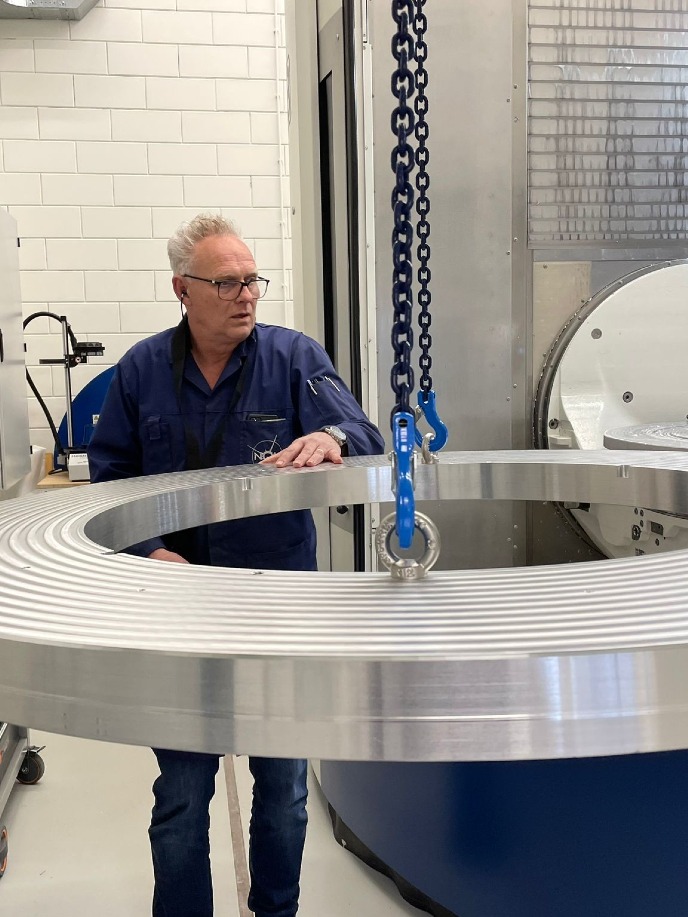
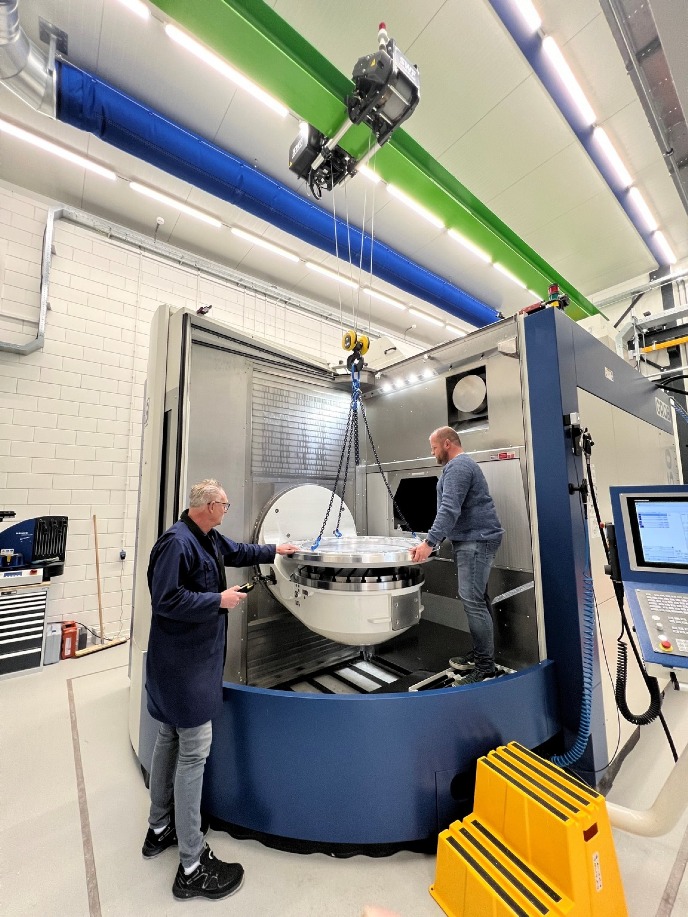
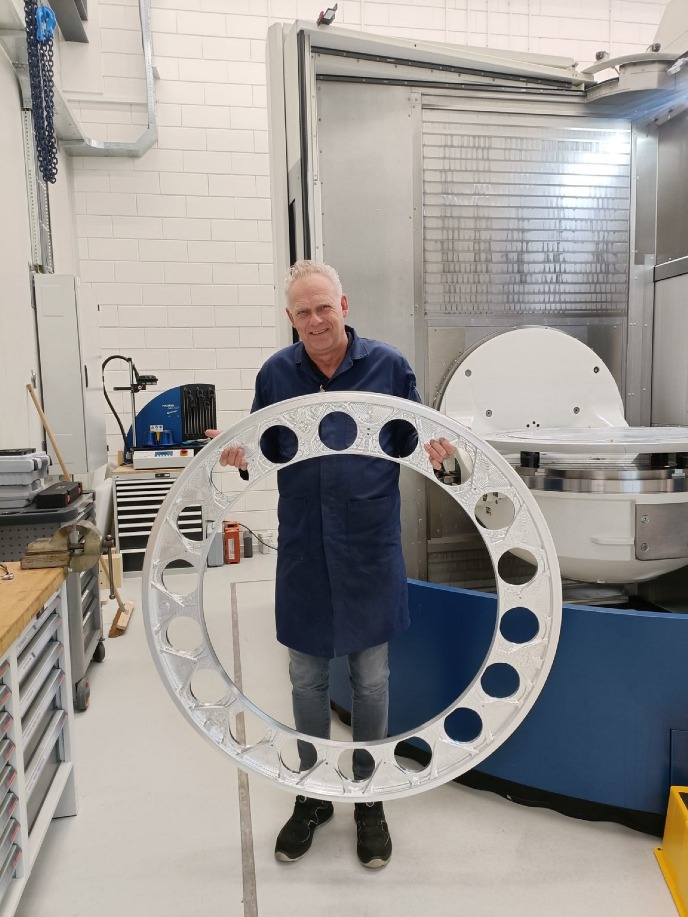
It is so very easy to do things wrong
Scientific goals
There is no room for error in the entire production process, which will take years. Apart from the best equipment, the facility therefore needs skilled and highly motivated technicians. Navarro: ‘Motivation is crucial, as it is so very easy to do things wrong.’ To train such skilled and dedicated technicians, NOVA works with a range of technical educational institutes, from purely practical instrument makers to computer savvy technicians. ‘They provide the golden hands we need.’
Astronomers are also involved in the construction process, like University of Groningen professor Eline Tolstoy. Her job as the Principial Investigator for the Dutch ELT team for MICADO is to oversee the production of the instrument. ‘I’m not very technical myself, but have every confidence in the technical team. My role is to monitor what they are doing and ask questions. Also, I have to check if major components are produced according to the specifications.’ Sometimes, a compromise is needed and together with the PI and his team in Germany, the Dutch team has to agree if it is good enough to achieve our scientific goals.’
Important questions
Apart from monitoring, Tolstoy is also responsible for the acquisition of funding. ‘We recently got funding from the NWO Open Competition program.’ And she is also head of the international MICADO science team. ‘Because of the funding we supply, we are ensured observation nights on the ELT. As a team, we decided to pool all our individually allotted time, 128 nights, which a huge amount. We are now making plans to tackle the most important questions that MICADO could answer.’

Cosmic web
One focus will be on studying stars from different ages, mainly in dwarf galaxies. ‘You can get a range of different ages there, and this will show us how galaxies evolve.’ The Big Bang produced mostly hydrogen and a bit of helium. All heavier atoms (dubbed ‘metals’ by astronomers) were created by nuclear fusion inside the first stars increasing the metal content of the Universe. ‘We are going to look for the first stage, the oldest stars, without any metals’, explains Tolstoy. ‘We know they should be out there, but none have been found so far.’ The extreme sensitivity of the ELT means that they will be able to study very distant and very faint objects, like these primordial stars.
Karina Caputi, another astronomy professor from the University of Groningen, will be involved in an instrument that is going to be built after MICADO. The MOSAIC spectrograph should allow her and her colleagues to study large areas of the sky in minute detail. ‘We are looking for the large scale structure of the Universe, the so-called cosmic web.’
(Text continues below the image)
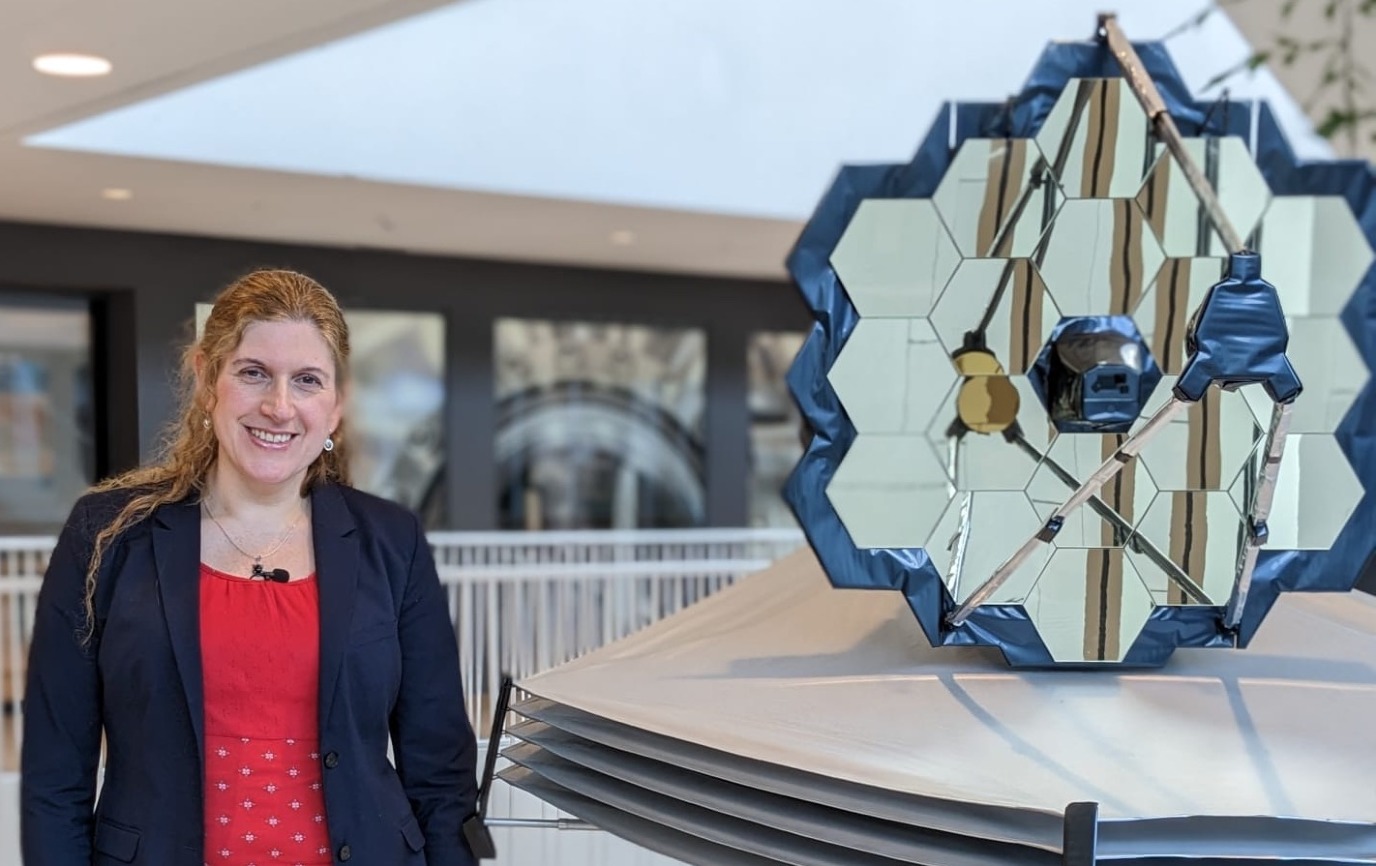
Journey
Galaxies are not distributed randomly over the sky, they cluster in filaments of this web. ‘We will also study this with the Euclid space telescope, which was launched on 1 July of this year. Euclid will provide us with big maps of the sky, but its spectrograph is limited. MOSAIC will help us to study the chemistry of the galaxies in the filaments in fine detail, as the 40 metre mirror of the ELT collects much more light that that of Euclid, which as a mirror of just 1.2 metres.’
First light of the ELT is now expected in 2028. The parts for MICADO should be delivered for assembly in Garching (Germany) in 2025, and after testing, the instrument should be arriving in Chili in 2027. ‘Although delays are always possible’, says Tolstoy. ‘The ELT project started in 2009, the journey has been long, and sometimes frustrating. But it will be worth it, astronomers worldwide are eagerly awaiting the ELT as they know that this extraordinary leap in telescope size will bring many ground breaking discoveries in many different fields.’
More news
-
19 December 2025
Mariano Méndez receives Argentine RAÍCES award
-
18 December 2025
Why innovate, and for whom?
-
17 December 2025
Ben Feringa wins Feynman Prize
